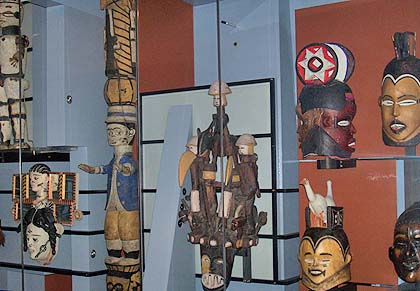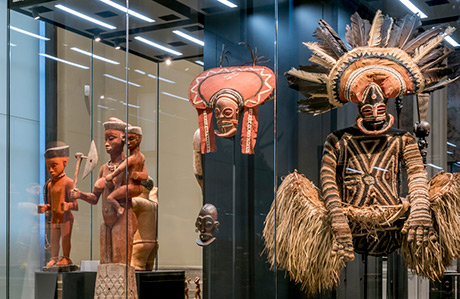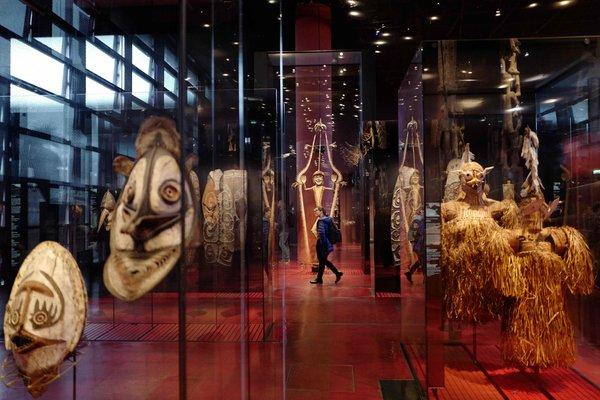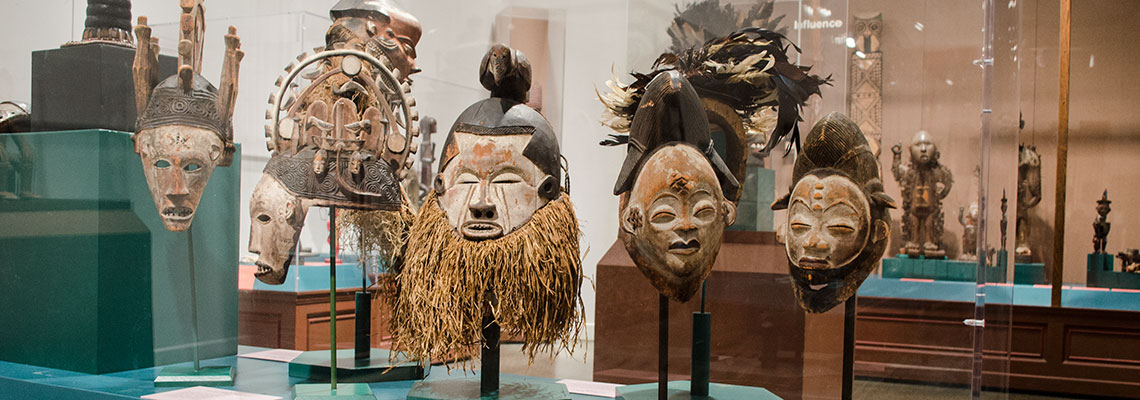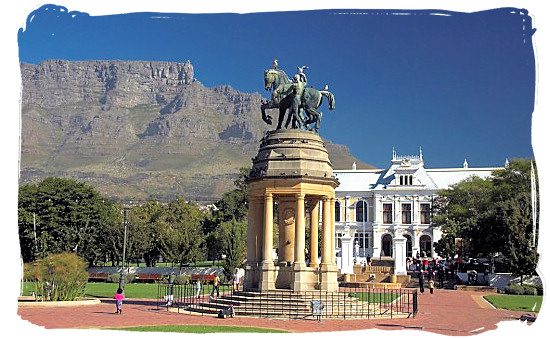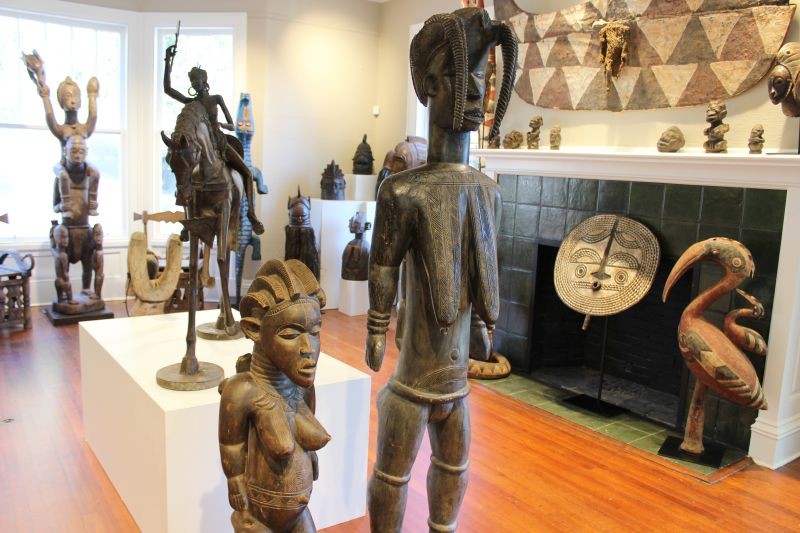African Museums
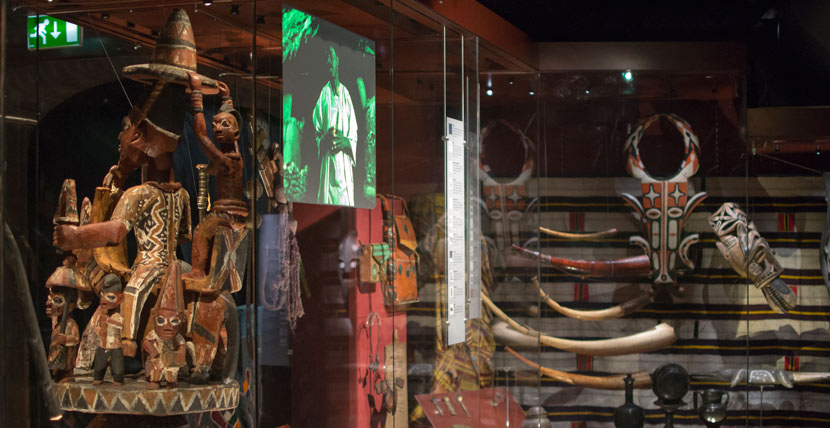
1. Mandela House, Soweto, South Africa:
The Nelson Mandela National Museum, commonly referred to as Mandela House, is the house on Vilakazi Street, Orlando West, Soweto, South Africa, where Nelson Mandela lived from 1946 to 1962. It is located at number 8115, at the corner of Vilakazi and Ngakane streets, a short distance up the road from Tutu House, the home of Archbishop Emeritus Desmond Tutu.[1]
Mandela donated the house to the Soweto Heritage Trust (of which he was the founder) on 1 September 1997, to be run as a museum.
The house is a single-story red-brick matchbox built in 1945. It has bullet holes in the walls and the facade has scorch marks from attacks with Molotov cocktails. The inside hosts some original furnishings and memorabilia including photographs, citations given to Nelson Mandela, and the world championship belt given to Mandela by Sugar Ray Leonard.[3]
As of 2009, the property includes a visitors' centre and a small museum.[4]
It was declared a National Heritage Site in 1999.[2]
2. Nigerian National Museum, Lagos, Nigeria
The Nigerian National Museum is a national museum of Nigeria, located in the city of Lagos. The museum has a notable collection of Nigerian art, including pieces of statuary and carvings and archaeological and ethnographic exhibits.[1] Of note is a terra-cotta human head known as the Jemaa Head (c. 900 to 200 BC), part of the Nok culture. The piece is named after Jema'a, the village where it was uncovered. [2] It is located at Onikan, Lagos Island.
3. Zinsou Foundation Museum, Villa Ajavon, Ouidah, Benin
La Fondation Zinsou, lieu d’exposition pour les artistes contemporains, a vu son action se renforcer et s’élargir, depuis juin 2005, tout en se maintenant aux standards internationaux de manière à rayonner au delà même des frontières du continent.
Parallèlement aux activités d’exposition de la Fondation Zinsou, la création d’une collection permanente s’est révélée essentielle pour contribuer à la préservation du patrimoine artistique africain, sur la terre de ses origines. Conserver l’art contemporain en Afrique, aujourd’hui, est fondamental face à une délocalisation des créateurs qui répond à un marché de l’art quasiment inexistant sur le continent. Face à ce constat, la famille Zinsou, passionnée d’art, a collectionné les œuvres contemporaines africaines, éclairée par un engagement esthétique et culturel.
Cette collection a servi de point de départ au projet qui avait été évoqué dès l’ouverture de la Fondation Zinsou, il y a huit ans : la création d’un musée d’art contemporain en Afrique.
Ce projet a vu le jour, grâce à l’engagement d’une famille, d’une équipe et de leurs nombreux soutiens et mécènes.
Dans un bâtiment historique de la ville de Ouidah, la villa Ajavon, le musée a ouvert ses portes au mois de novembre 2013, accueillant une première exposition, « Focus sur la collection« , qui a permis de découvrir 13 artistes, représentant 9 pays d’Afrique.
4. Nairobi National Museum, Nairobi, Kenya
The Museum aims to interpret Kenya’s rich heritage and offers a one stop for visitors to sample the country’s rich heritage both for education and leisure. In addition to the museum, visitors are treated to a variety of shopping and dining facilities, as well as botanical gardens that offer a serene environment.
The museum is open on all 356 days throughout the year from 0830hrs -17300hrs.Nairobi National Museum is located at the Museum Hill, approximately 10 minutes drive from the Nairobi city centre accessible both by public and private means. Built in 1929, this is the flagship museum for the National Museums of Kenya, housing celebrated collections of Kenya’s History, Nature, Culture and Contemporary Art.
Historical Background
The Museum was initiated in 1910 by a group of enthusiastic naturalists under the then East Africa and Uganda Natural History Society [currently the East African Natural History Society (EANHS)], who needed a place to keep and preserve their collections of various specimens. The first site for the museum was at the present Nyayo House, which later became too small and a larger building was put up in 1922 where the Nairobi Serena Hotel stands today.
In 1929, the colonial government set aside land for a museum construction at Museum Hill which was officially opened in September 22nd 1930 and named Coryndon Museum in honour of Sir Robert Coryndon, one time Governor of Kenya. In 1963 after independence, it was re-named the National Museum of Kenya (NMK).
On October 15th 2005, the Nairobi Museum closed its doors to the public for an extensive modernization and expansion project the outcome of which was an impresive and magnificient piece of architecture that puts it in competition with other world- class museums. The museum later re-opened in June 2008 as the Nairobi National Museum, and continues to draw visitors from all walks of life in appreciation of Kenya’s rich heritage.
The artworks and materials used in the fabrication of outdoor sculptures, the landscaping and the botanic gardens, link to the four pillars of Kenya’s national heritage i.e. nature, culture, history and contemporary art.
5. Bo Kaap Museum, Cape Town, South Africa
The Bo-Kaap (“above the Cape" in Afrikaans) is an area of Cape Town, South Africa formerly known as the Malay Quarter. It is a former township, situated on the slopes of Signal Hill above the city centre and is a historical centre of Cape Malay culture in Cape Town. The Nurul Islam Mosque, established in 1844, is located in the area.
Bo-Kaap is known for its brightly coloured homes and cobble stoned streets. The area is traditionally a multicultural neighbourhood, and most of its population is Muslim. According to the South African Heritage Resources Agency, the area contains the largest concentration of pre-1850 architecture in South Africa, and is the oldest surviving residential neighborhood in Cape Town.
In 1760 Jan de Waal bought a block of land at the foot of Signal Hill, between Dorp and Wale Streets. A year later he obtained an adjacent parcel, extending his holding to Rose/Chiappini/Shortmarket Street. Starting in 1763, de Waal built several small “huurhuisjes” (rental houses) on this land, which he leased to his slaves. The first three are at 71 Wale Street (now the Bokaap Museum), above Buitengracht Street, and 42 Leeuwen Street respectively.
Because the aboriginal tribes in the (Cape Town) area resisted the Dutch, slaves were initially imported from Malaysia, Indonesia and other parts of Africa, hence the name “Malay”. Most of the new residents were Muslim, and several mosques were built in the area, starting with the Auwal Mosque in Dorp Street in 1740. Between 1790 and 1825 more housing in both the Cape Dutch and Cape Georgian styles was built for the expanding population of tradesmen, craftsmen, and artisans. More Muslims continued to move into the area, including a wave of political exiles from Java and Ceylon circa 1820. After the emancipation in 1834 and the arrival of liberated slaves, developers constructed numerous rows of narrow, deep huurhuisjes.
The brightly coloured facades are attributed to an expression of freedom by the new homeowners, as all the houses were painted white while on lease.
Preservation of the area began in 1943 when 15 houses were restored by a group of prominent citizens, with the support of the Historical Monuments Commission. In 1966 a portion of the area was designated as a National Monument. From 1971 the City Council began restoring houses and streetscapes, with 48 units completed by 1975.
Gentrification
As a result of Cape Town's economic development and expansion, and after the demise of forced racial segregation under apartheid, property in the Bo-Kaap has become very sought after, not only for its location but also for its picturesque cobble-streets and unique architecture.[6] Increasingly, this close-knit community is "facing a slow dissolution of its distinctive character as wealthy outsiders move into the suburb to snap up homes in the City Bowl at cut-rate prices". Inter-community conflict has also arisen as some residents object to the sale of buildings and the resultant eviction of long-term residents.
National Heritage Status
In May 2019, 19 sites in the Bo-Kaap area were declared National Heritage Sites by the South African Minister of Arts and Culture. The announcement followed the City of Cape Town's council's March 2019 approving of the inclusion of the Bo-Kaap area in a Heritage Protection Overlay Zone (HPOZ), which will incorporate around 600 privately-owned homes. The City received over 2,000 letters from members of the public, a strong majority of which were in support of the new Heritage Zone. The HPOZ stretches to the Table Mountain National Park, and includes the northern verges to the northwest of Strand Street as well as Buitengracht Street, between the intersections with Carisbrook Street and Strand Street.
The 19 sites became official National Heritage Sites through a declaration by the South African Heritage Resources Agency, under the National Heritage Resources Act (No 25 of 1999). Objectives of the Heritage Zone include conserving the Bo-Kaap heritage by encouraging owners to retain and rehabilitate the existing residential buildings; ensuring new developments in the area complement existing landscape; and promoting social and cultural traditions in the area.
6. Bulawayo Railway Museum, Bulawayo, Zimbabwe
Bulawayo Railway Museum (est. 1972) is a railway museum located at Bulawayo railway station in Zimbabwe, that houses several exhibitions on the history of the railway system in Zimbabwe, formerly Rhodesia. Its oldest exhibits date back to 1897, and include Cecil Rhodes' personal railway coach. The museum is owned by NRZ. Due to the severe shortage of rolling stock, some steam locomotives in the museum have, in the past, been refurbished and returned to service.
7. Village Museum, Dar es Salaam,
The Makumbusho village is a museum that showcases authentically constructed houses and equipment from a few of the tribes of Tanzania and is located at the heart of Dar es Salaam. It is one of the five major museums in the country, the others being the Dar es Salaam National museum, the Mwalimu Nyerere museum, the natural history museum and the Arusha declaration museum.
Only a few of the Dominant tribes are represented at the museum as there are way too many tribes (over 130) in the country to successfully build a house for each at the site, let alone maintain them.
